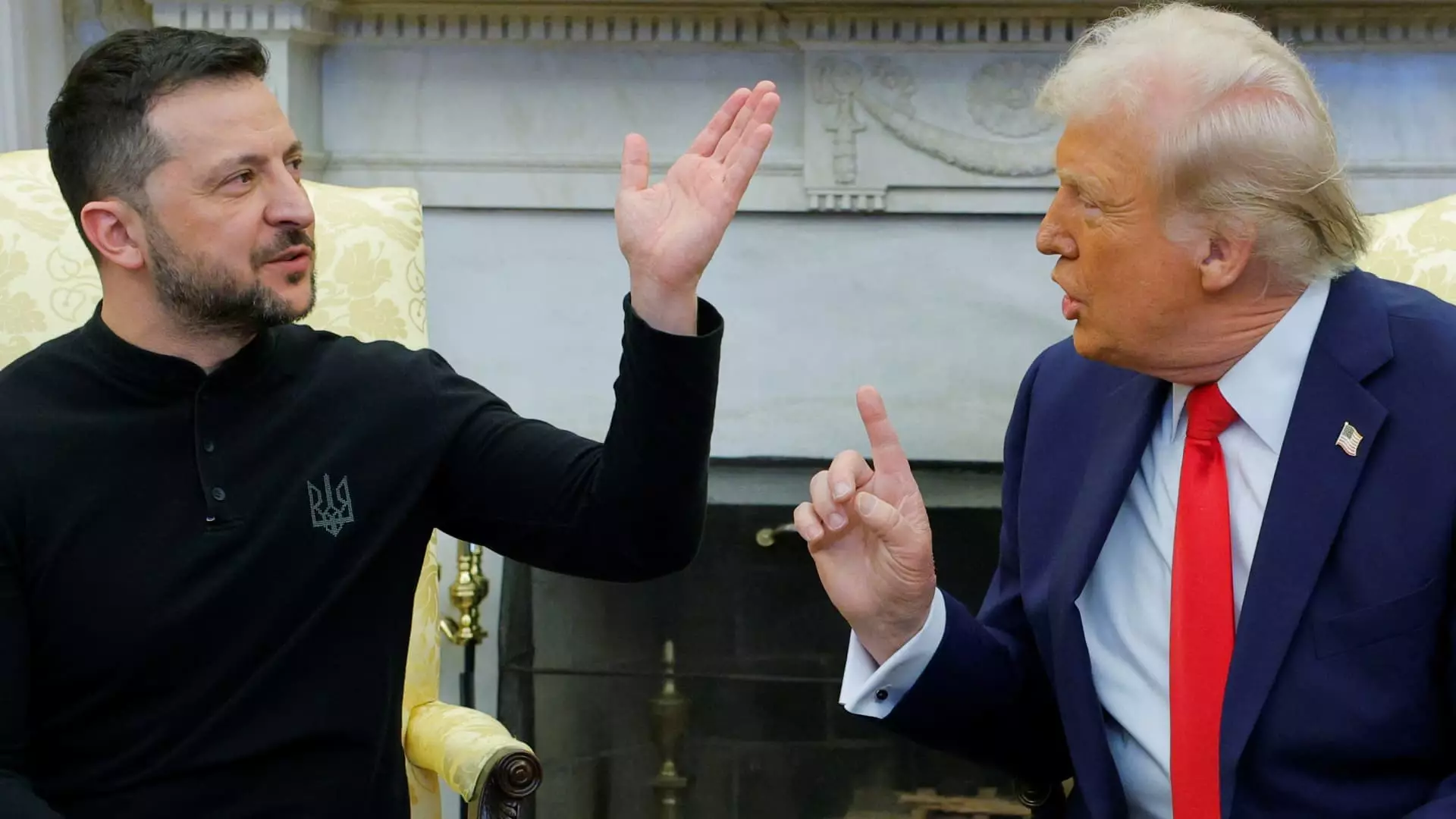On a recent Friday, the White House revealed a tumultuous interaction between President Donald Trump and Ukrainian President Volodymyr Zelenskyy during their Oval Office meeting. What was initially set to be a diplomatic discussion quickly escalated into a fraught exchange characterized by a stark difference in communication styles and expectations of respect. The incident highlights the tenuous nature of international diplomacy, particularly in the context of ongoing conflicts and geopolitical tensions.
According to White House Press Secretary Karoline Leavitt, the chipper atmosphere intended for diplomatic talks took a nosedive when President Zelenskyy exhibited body language deemed inappropriate. Reports indicate that the Ukrainian leader’s choice of folding his arms, rolling his eyes, and adopting an overall informal posture was perceived as a blatant disregard for the decorum expected in such high-stakes meetings. While specific remarks made by Zelenskyy were not identified as the root of the President’s displeasure, his tone was clearly problematic. This incident illustrates a fundamental aspect of diplomatic communication: nonverbal cues play a pivotal role in shaping the perception of respect and authority.
Compounding the matter was Zelenskyy’s decision to address Vice President JD Vance informally, referring to him by his first name instead of the more formal “Mr. Vice President.” This choice further inflamed tensions, leading to a public admonition from Vance. Here lies a critical observation about diplomacy; the nuances of language, particularly when it comes to titles and forms of address, can influence the dynamics of power and respect in international negotiations.
Leavitt’s discontent extended beyond communication styles—it encompassed the attire choices made by President Zelenskyy during his visit. The press secretary expressed annoyance that the Ukrainian leader didn’t wear a suit, which, in normative diplomatic contexts, signifies both respect and professionalism. This episode underscores the interplay between cultural perceptions of attire and the expectations of formal diplomacy. Zelenskyy’s casual appearance—a black sweater adorned with the Ukrainian emblem—became a focal point for criticism.
In response to inquiries about his clothing choice, Zelenskyy defended his appearance by citing the ongoing war in Ukraine, which he believes transcends traditional norms of political attire. “I will wear a suit after this war is over,” he asserted, reflecting a prioritization of substance over form in a context defined by crisis. This juxtaposition raises essential questions about the appropriateness of traditional diplomatic attire versus the stark realities leaders face in wartime scenarios.
During the meeting, the philosophical divide between the Ukrainian and American leaders became increasingly apparent when Zelenskyy voiced skepticism about Russia’s reliability in upholding any peace agreements. This challenge prompted a heated defense from both Trump and Vance, particularly when Zelenskyy was accused of being “disrespectful” for openly contesting the realities of trusting Russia. The clash elucidates the complex interplay of trust and pragmatism in international relations.
Vance suggested that Zelenskyy express gratitude for the support provided by the United States, to which Zelenskyy countered, emphasizing that he had conveyed his appreciation multiple times. This exchange laid bare differing expectations around the discourse of aid and diplomacy, revealing an underlying tension in how Ukrainian leadership aligns with U.S. foreign policy objectives.
The backdrop to this tumultuous interaction remains the enduring complexity surrounding Trump’s previous phone call with Zelenskyy in 2019, which resulted in his impeachment. The historical lens complicates current interactions, underscoring a relationship fraught with political agendas. Trump’s comments regarding Russian President Vladimir Putin further complicated matters, as he sought to mitigate the repercussions of alleged interference in American politics while attempting to reclaim a sense of authority in the dialogue.
Trump’s focus on his own experiences, including the “witch hunt” he faced related to Russian interference, served to detract from the core concerns expressed by Zelenskyy. These dialogues exemplify the challenge of navigating personal grievances in the realm of international negotiations, where individual narratives often intersect with collective national interests.
The Oval Office meeting between Trump and Zelenskyy underscores the complexities of diplomatic relations amid rapidly changing geopolitical landscapes. The clash of communication styles, cultural expectations, and personal grievances highlights the delicate balance diplomats must maintain. As global conflicts evolve, understanding and addressing these nuances will be paramount for leaders seeking to foster meaningful dialogue and collaboration on the world stage. Ultimately, success in diplomacy will depend on grasping not just the words exchanged, but the underlying currents embodied in body language, attire, and the commitment to mutual respect.


Leave a Reply